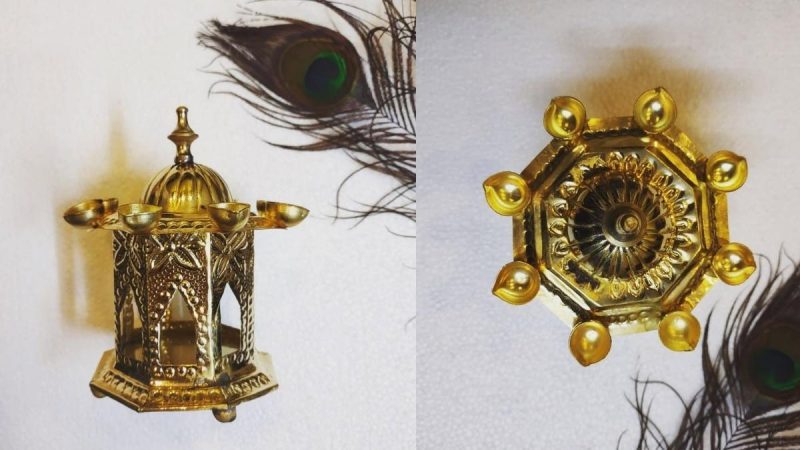As Diwali approaches, there’s a kind of magic that spills out of every window and courtyard. Lights bloom like fireflies, marigolds drape themselves over doorways, and amidst this bright hum of festivity sits something quietly powerful, a Hatri. It’s small, earthy, and yet, in the heart of countless homes, it becomes the most important corner of the night. A Hatri isn’t just another festive ornament you buy off a market shelf; it’s a house you build for the gods.
The Sacred Story Behind Diwali’s Hatri Tradition
The word ‘Hatri‘ itself carries stories from Mathura and Vrindavan, places where Lord Krishna once, in his childlike mischief, set up his own tiny “Hat” or shop, calling villagers to come and share sweets and toys. That playful act, rooted in generosity and community, now lives on as a ritual. When families build or bring home a Hatri, they’re not just preparing for Lakshmi and Ganesha; they’re inviting that same abundance and warmth that Krishna once scattered through a village street.
As dusk falls on Diwali night, the Hatri takes centre stage. Diyas glow around it like a halo, marigold garlands curl over its roof, and grains, turmeric, salt and coins rest inside. It is a language older than memory, speaking of wealth, harvest and good trade.
Also Read: Diwali Long Weekend: 10 Cheapest Countries To Visit From Delhi, Mumbai & Bengaluru
Why The Hatri Still Holds The Heart Of Diwali
In some homes in Vraj, families set it up days before the festival, filling it with sweets and little trinkets, a playful echo of Lord Krishna’s marketplace. In Sindhi homes, a diya and a humble coconut find their place inside. There’s no single way to honour it, only a shared sense of belonging that binds everyone in its welcome.
Once upon a time, these Hatris were made only from raw clay, the kind that left your hands cool and earthy after touching it. Today, they’ve changed their skins. Mathura’s silversmiths craft gleaming Hatris that weigh up to a kilo, bought like heirlooms and handled with reverence. In other corners, potters still sit cross-legged, shaping clay Hatris, and painting them by hand; their fingers carrying stories from generations before.
Also Read: Good News! Government Directs All Airlines To Maintain Reasonable Airfares Ahead Of Diwali
Festivals change, décor trends come and go, but the Hatri has a stubborn soul. It doesn’t try to be the loudest thing in the room; it simply holds space for devotion, memory, and a moment of quiet reverence in a season of noise. When the diyas burn low and the night smells of smoke and sweets, it stands there as a tiny house for the divine, lit up like a promise.
Cover Image Courtesy: triptiarts/Instagram

